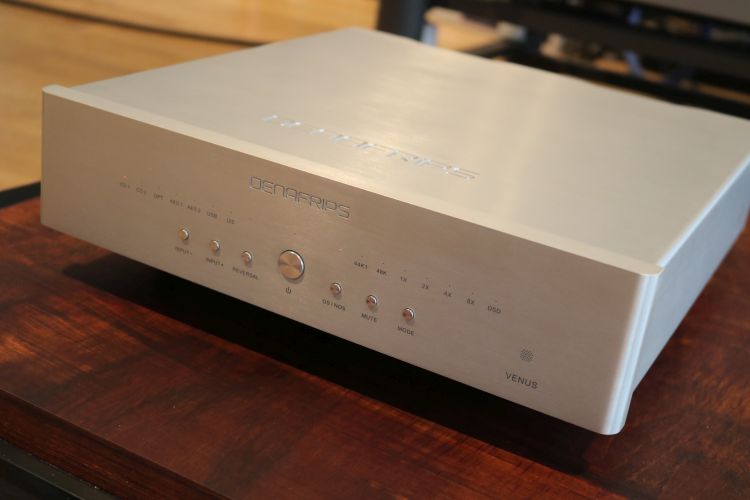
Review sample supplied by Vinshine Audio
Retail price ex VAT: 2.898 USD
For the initiated, Denafrips already has a stellar reputation. But for some, it may not ring any bells. That may be because it is not one of the default brands often seen in shops. Impressively, Denafrips provides a 36-month warranty on all of its products which should help instill trust for those who still believe that a Chinese company could not make reliable products. From my point of view, the company became known for its 4.498-USD Terminator DAC which was hailed by reviewers as anywhere between ridiculously good and the best there is. Alas, I have not yet heard the Terminator but when Alvin of Vinshine Audio asked me to review the Terminator’s smaller brother, the Venus, I was quick to accept.
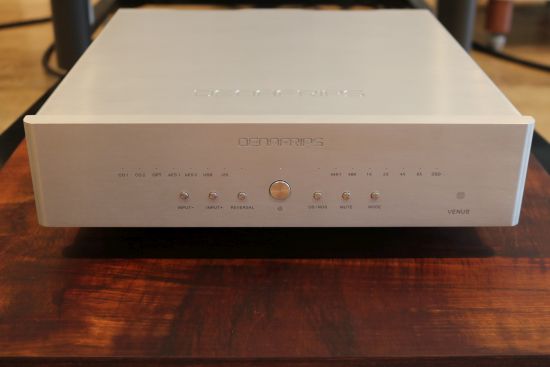
Visually a more compact and arguably even more handsome version of the Terminator, the Venus is Denafrips’ 2nd-tier flagship DAC and, as such, it is built around a very similar architecture. Like the Terminator, the Venus employs a true balanced, dual-mono R-2R network array DAC and contains what seems like a gazillion small capacitors nicely ordered in banks across the entire unit. Each channel is equipped with an independent high-speed FPGA to control the decoding by means of 4 sets of 0.005% R-2R networks. All the inputs are FIFO buffered and reclocked by the Crystek CCHD-957 FEMTO Clocks. This latest version uses a new DSP board with an updated USB implementation containing a proprietary USB Audio Solution via an STM32F446 AMR-Based MCU. For the best sound quality, the USB circuitry is designed to switch on only when USB Input is selected. In use, this means that the DAC is only visible in the playback software, in my case Roon when the USB input is actually selected. This may be less convenient but more manufacturers do this and I have no problem with it. The DAC supports all PCM and DSD rates up to 11.288MHz (DSD4X) but I only used PCM sources.
Looking at the available inside pictures it seems that the main area where costs have been cut, besides the size of the cabinet, is the power supply. The Venus’ power supply may be smaller and perhaps contains fewer components but it is still linear (not switched) and entirely encapsulated in a thick metal alloy, equipped with dual toroidal transformers and completely isolated linear regulators in multiple stages for the digital and analog sections.
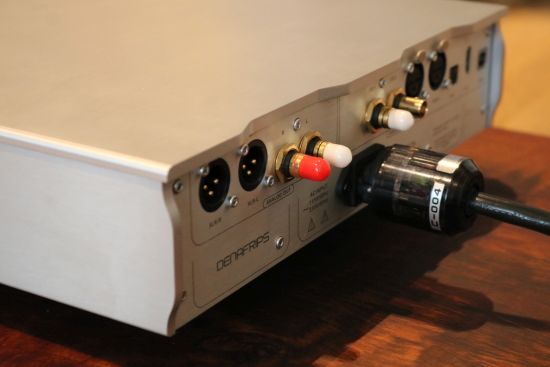
The discrete resistor network DAC can work in oversampling or non-oversampling mode. While the difference was not as huge as it can sometimes be I did notice that with oversampling engaged the transients were slightly softer and thus I developed a preference for NOS. This way, the DAC sounds purest and that is what I am after. People who want to soften the sound a bit may prefer the OS mode. From looking at the inscription on the front panel it is not really clear when the unit is in NOS or OS mode but the manual indicates that a lit led means that the DAC is in NOS-mode and this was indeed confirmed by my listening tests.
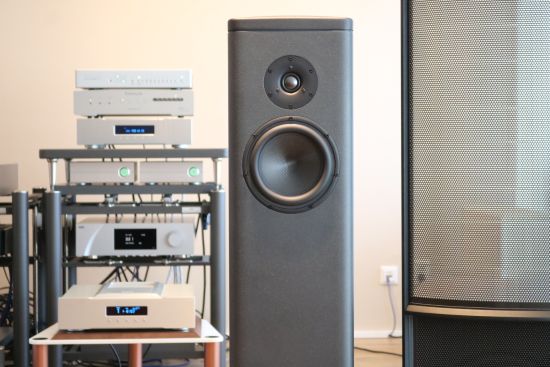
System context
The Venus will be assessed in a system comprised of the CH Precision L1 preamplifier and A1.5 power amplifier with Martin Logan ESL15A loudspeakers. As digital source I used the Jay’s Audio CDT-II MkII and Aqua La Diva CD transports as well as the Antipodes CX+EX music server combo. For DAC comparisons, I have the Aqua Formula xHD which also uses a NOS R2R architecture, the Jay’s Audio DAC-2 Signature and the Bryston BDA-3.14 DACs at hand. The interlinks used are CH Precision Balanced Link, FoilFlex XLR and Vermouth Reference between the DACs and the preamplifier.
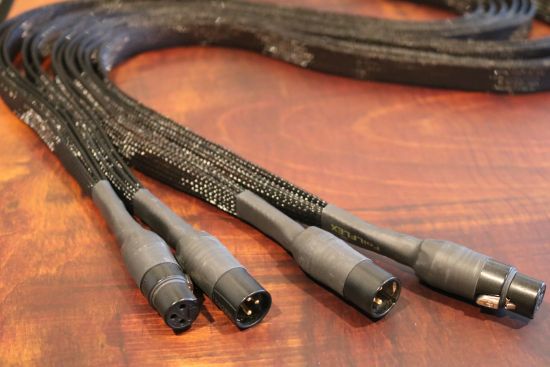
With regards to the interlinks to connect the Venus one can take different directions. For instance, if the aim is to retrieve the utmost level of resolution with as little smear as possible then the FoilFlex cables will be very hard to beat. If, on the other hand, one wants to bring more substance and color into the sound then the Vermouths are a great option.
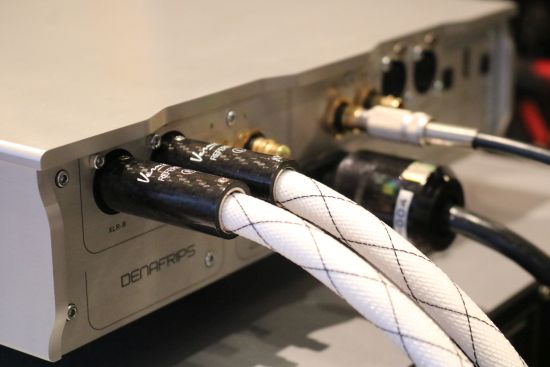
Between the preamp and power amp, I used a second CH Precision Balanced Link. Finally, the speaker cables are Jorma Design Trinity and the power cables all Belden with Bals schuko- and Oyaide C-004 IEC connectors.
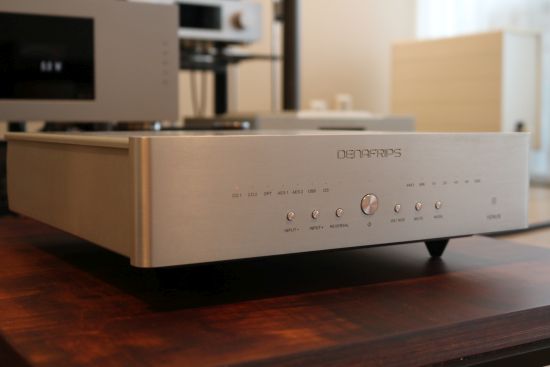
Warming Up
With some components, the effect of warming up is negligible but with the Venus, this is of real importance. I’ve let the unit warm up to room temperature for more than a day prior to switching it on but even when the unit itself has reached room temperature when the power is first applied, it sounds different than when it has been powered for a generous amount of time. It’s not that it sounds bad when cold, however, far from it! Actually, it sounds mighty darn impressive even when cold. Even when just switched on, the Venus amazes with superb resolution and refinement on a level competitive even for the almost-14K Aqua Formula xHD. For the first couple of hours (at least, maybe even longer), it is absolutely impressive and not at all harsh or edgy but its tonality does tilt over to the bright side. While this helps bring out subtle details with some tracks, a comparison with all the aforementioned other DACs confirms that the Venus is the odd one out in terms of tonality. And indeed, other tracks fared less well, sounding white-ish or bland. But even then, the performance was impressive.
When I checked again the next day, this had evened out to an almost flat response and the unit now sounded well-balanced while retaining its amazing resolution. However, with warm-up, it also became slightly softer on the transients which now made it fall back just behind the Formula xHD in that regard.
I also checked what happens when just switching the unit to standby and leaving it connected to the mains power. In that situation, it is well-balanced right away but it still evolves to a fuller, richer, sound as time passes.
It is good to keep in mind that the DAC’s tonality and smoothness change considerably between first switch-on and it having been powered on for a longer period and for this reason, it is best to just leave the unit switched on all the time.
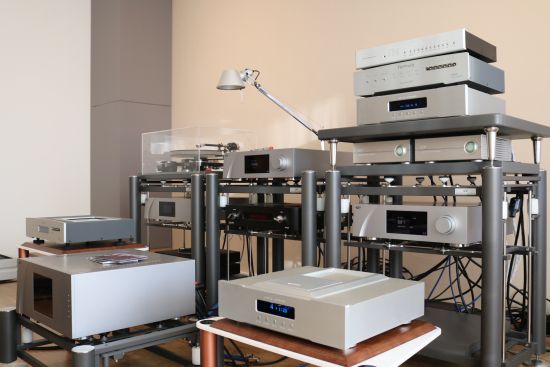
Listening
After having been properly warmed up, my serious listening started using the Jay’s Audio CD-T MkII transport. Combined with the Venus this results in a lovely smooth and fluid presentation with an easy-going musicality that tends to stray the attention away from analytical listening. So, in order to get to the bottom of the Venus’ performance while staying with CD, I used the more resolute-sounding Aqua La Diva CD transport which is visiting as part of another review. Sure enough, from the very first tones that the Venus reproduced using the CD transport via a Belden RG59 coaxial cable, de DAC’s differentiation is startling, very noticeably better than the majority of the other DACs that I have available.
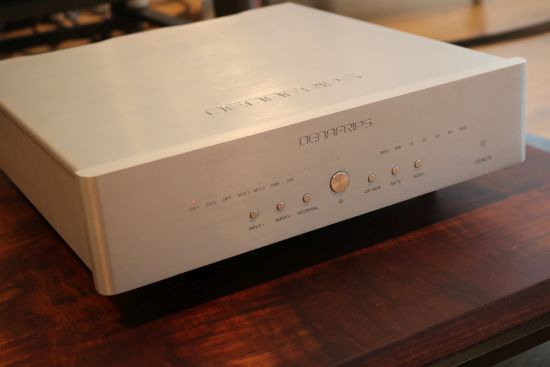
After listening to only a couple of tracks, already, the Venus had created a niche for itself on a level where only the Aqua Formula xHD (with V2 output board) and the CH Precision C1 could compete. As the latter is incomparably more expensive, I’ll leave it out of the equation for the rest of this review.
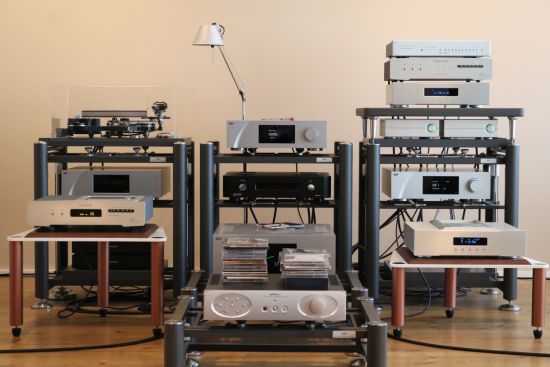
Of course, the DAC stack was only listened to casually like this. For the critical listening, each DAC was positioned on the top right platform all by itself.
Even after having been switched on for days and no longer being bright, the Venus retains a very open signature. Of all the DACs that I have available at this moment, the Venus and the Aqua are the most open, airy, and transparent. The Bryston BDA-3.14, Ayon Stealth, Jay’s Audio DAC-2 Signature and the CH Precision C1 are all darker and with the exception of the C1, less well-resolving. The other DACs certainly have their specific strengths (for instance, the Bryston’s smooth solidity and the Jay’s’ Wadia-like sonority) but because they sound so different I will focus mainly on the differences between the Venus and the Formula xHD. This is the most interesting comparison anyway because these both operate according to similar principles.
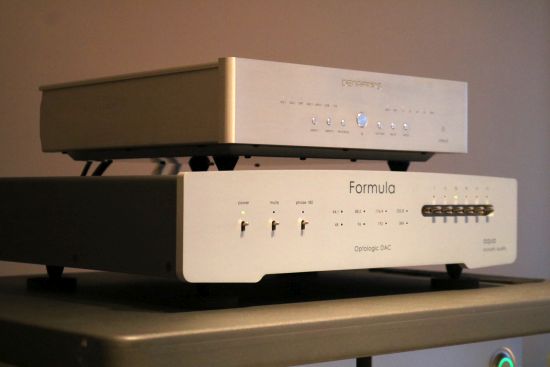
One thing that might go unnoticed unless compared specifically is the quality of the USB port versus the quality of the conventional SPDIF/AES inputs. One could think these would always yield similar results but I actually often find discrepancies where the former sound better than the latter or vice versa. I did a lot of testing with this in the recent past when I still used the Aurender N10 which has been designed with extreme attention to the output board. The N10’s outputs all sounded very similar and that allowed me to find out how various DAC inputs behaved. My current music server only has network and USB outputs and so I cannot compare the quality directly. However, I do have the excellent Jay’s Audio CD transport available for assessing this and currently also the Aqua la Diva.
As far as the conventional inputs are concerned, these are all well-executed for all the DACs that I mentioned above and the Venus is no exception. The input that sticks out very positively is the USB input. The Aqua Formula xHD sounds best when fed from the La Diva CD transport via Belden RG59 coax cable or the I2S AQ Link. When fed from the Antipodes CX or CX+EX via USB, by contrast, it has a thicker and more static delivery. The Venus, on the other hand, sounds remarkably fast and upbeat via USB, closer, in fact, to the CD input via coax than is the case with the Formula xHD. So, apparently, there’s really something special about the Venus’ USB Module.
The Venus’ delivery is always spacious and well-defined in all planes, including the depth plane. There is always the sense that there is a real acoustic space in which the musicians are performing. And this works just as well with coax as with USB.
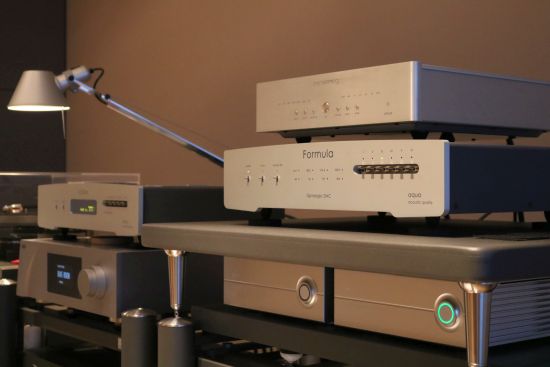
When it comes down to it, in a direct comparison with the Aqua Formula xHD, the Venus comes remarkably close which, given the huge price difference, is quite amazing. Especially its resolution, air, transparency, refinement, and overall precision are almost on par with the much more expensive competitor. But the Aqua remains in the lead in these areas and there are two particular areas where the Aqua is significantly better. First, the Aqua is tonally more natural and convincing, it has a fuller timbre as well as richer textures, making guitar sound more like the combination of wood and string that it is whereas the Venus more accentuates the string part. However, please do not read this as the Venus sounding unnatural. If it were, I would have definitely picked up on it with the Logans but this is not the case. The Aqua is just more natural.
Secondly, the Venus is not quite as sharply delineated in the transients and it just sounds very slightly filtered even when in NOS mode. This makes that, especially in loud parts of complex mixes, the individual sounds that make up the composition can blur together more than they do with the Aqua. In other words, the Venus normally sounds impressively detailed, expressive and refined but its resolution and dynamic differentiation are reduced a little in complex crescendo passages. An example of this can be heard in the build-up strings with ambient noise crescendo of Laura Mvula’s “The Dreaming Room” at the end of track 1 into track 2. With many DACs, this is turned into an undefined mushy noise but with the Venus, the individual strands are much clearer. The Aqua, however, is even purer and more expressive and this makes the crescendo even more exciting.
These aspects may just be minor details for some or deal-breakers for others. If resolution, transparency and transient sharpness are paramount then the Aqua Formula xHD remains King. Heck, in these areas, not even the CH C1 can surpass it. But this supremacy comes with a very hefty price tag. Ultimately, however, this also does not change the fact that the Venus handily outperforms the other aforementioned DACs in these areas. There are not many DACs as transparent and as highly resolving yet so refined as the Venus and the ones that are and that I have heard cost considerably more. Now, there is one pretty obvious question on my mind: how would the Terminator compare?
Conclusion
The Venus offers absolutely impressive resolution, neutrality, and transparency combined with an amount of subtlety and refinement that can be considered benchmark-setting for this price class.
More Denafrips
Denafrips Ares II, Pontus II, Venus II, and Terminator Plus compared
Also, keep an eye on the HFA YouTube channel, as a Denafrips video is in the making!
External Links
Manufacturer: Denafrips
Available from: Vinshine Audio






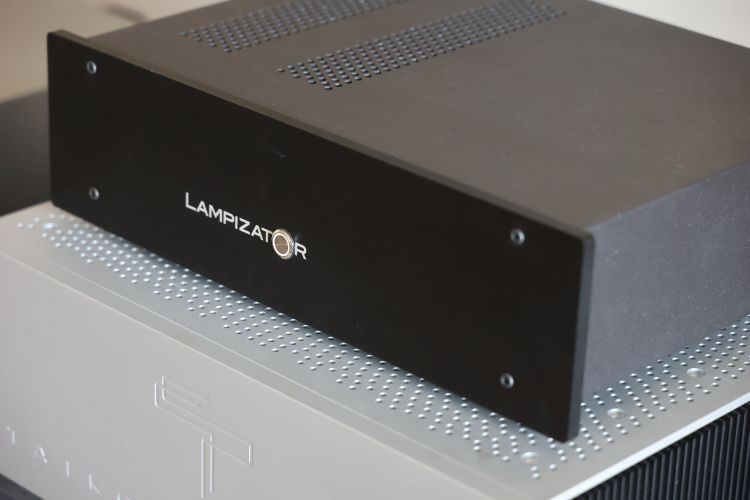
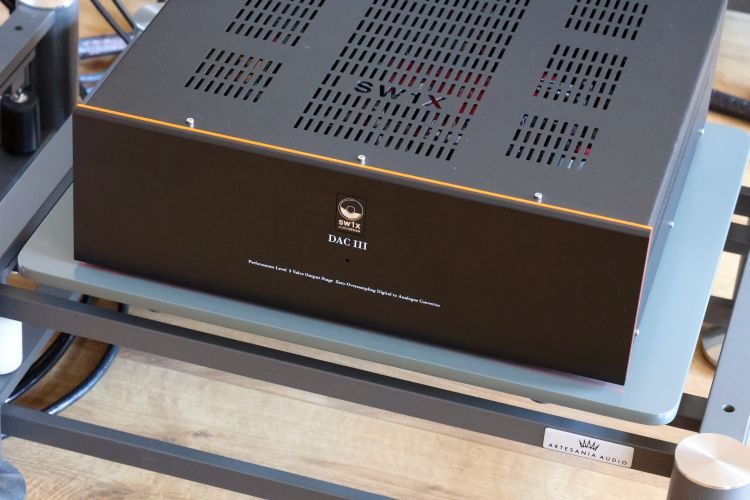
Hi Christiaan,
Would be interesting to read about how you think the dCS Bartok compares, sonically, to your other DACs.
Best regards,
Per
Indeed, that would be interesting and this is something that is on my TO DO list. A Bartok review may very well materialize some day:-)
Hello
How would the Venus compared to Audio GD R8 DAC ?
As they both R2R dacs and you prised R8 more than venus imho.
Thank you,
From memory, the AudioGD DAC was not quite as refined as the Aqua, a little less hi-res and refined but very pure and direct and highly involving. The Venus is every bit as refined and hi-res as the Aqua but sounds less direct and it has a timbre that is less natural to my ears than that of the Aqua and the AudioGD. If you like refinement and subtlety above all then the Venus certainly offers the best value for money. If purity and timbre are most important then the AudioGD and the Aqua will be more satisfying.
I have the bda-3 bryston and I am eyeing the venus. Does the Venus give as much low end slam bass reproduction as the bryston.
The Venus, like the Aqua Formula xHD, has a slightly slender sonic signature, when compared to fuller and more voluptuous-sounding DACs such as classic Wadias and, indeed, the Bryston BDA-3. It does not have the same fullness and slam but it is nimbler, tighter and more accurate.
many thanks for your input sir , have a good day to you.
Hi Christiaan,
Any chance on trying the Denafrips Terminator Plus or the Athena Preamp?
I’m cued up for reviewing the Avatar CD transport which is currently back ordered. If they are stocked up again and things are set in motion then I’ll see what other Denafrips models can be reviewed.
Hi Christiaan,
I just listened to an Aqua La Voce. It was quite an improvement comparing with my Metrum Menuet. But i’m also very curious about the Denafrips Venus. You tried the last one and you’re familiar with Aqua dacs. How would you compare the Venus with the La Voce? Any preferences? And if so, why?
Although they share certain similarities, they are also different. The Venus is slightly more highly resolving and a little bit more linear and overall technically more precise but the La Voce has a fuller, richer, more natural presentation along with a certain magic in the midrange that lures the listener in. Between the two, it comes down to taste and what weighs heavier for you: precision or musicality. Not that the Aqua is imprecise or the Denafrips is not musical but I have to emphasize these aspects to make the differences easy to interpret. All that said, if I had the funds, I’d step up to the Aqua La Scala.